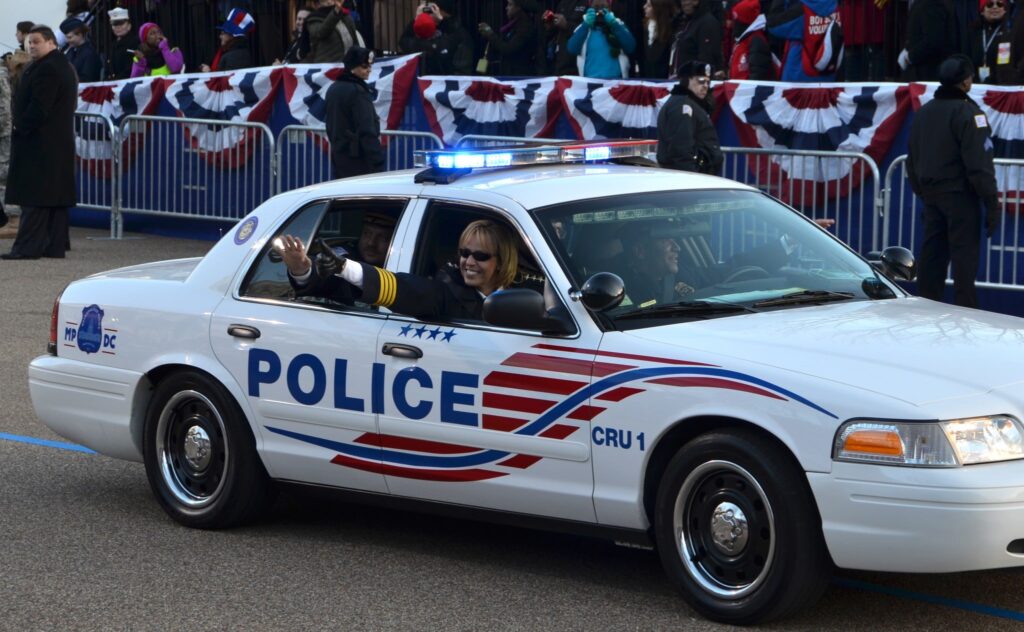Maureen Dowd Must Read: The Adventure of Blondie and the Bloodhound
September 2, 2013
By MAUREEN DOWD, New York Times – CATHY LANIER’S early life plays like a season of MTV’s “Teen Mom.”
Cathy Lanier, the D.C.police chief, is especially proud of her force’s newest rookie:Sam, the bloodhound. She’s tough on crime, but insists on compassionate cops
Skipping school at 13. Pregnant at 14. Married at 15. Separated at 17, on food stamps and back with her mother on a working-class block by a railroad in suburban Maryland; her mother had also relied on welfare and donated food to feed Cathy and her brothers after her husband split when Lanier was a toddler.
“I didn’t even know how to write a check much less pay the bills,” said the attractive and nearly 6-foot-tall blonde, now 46.
Her mother and grandmother cared for the baby while Lanier sold awnings and hair products, worked as a waitress at a barbecue joint at night and a secretary for a real estate developer by day.
 “When I took that job, I was 16,” she recalled. “Typing classes come in the 10th grade, and I didn’t make it to the 10th grade. I got my G.E.D. So when they offered me the secretary job, they said ‘Can you type?’ I said, ‘No, but I’ll learn if you let me take the typewriter home.’ So my mother taught me how to type at the kitchen table.”
“When I took that job, I was 16,” she recalled. “Typing classes come in the 10th grade, and I didn’t make it to the 10th grade. I got my G.E.D. So when they offered me the secretary job, they said ‘Can you type?’ I said, ‘No, but I’ll learn if you let me take the typewriter home.’ So my mother taught me how to type at the kitchen table.”
Eventually, Lanier traded the typewriter for a gun. She joined the D.C. police force at 23, attracted by a program that offered to cover her tuition to go to college by day while she worked the late shift as a beat officer; she went on to get two master’s degrees.
Now, remarkably, she is the very popular police chief of the nation’s capital, a white woman in charge of law enforcement in a city with a black majority; a watchdog for a city — with its monuments, mandarins and diplomats — that is a maze of different security forces and a target for terrorists, hackers and retaliatory strikes.
As tensions over aggressive stop-and-frisk tactics shake up the New York mayor’s race, Lanier has reviewed the D.C. version. Over the years, she has shifted her force from mirroring New York’s “zero tolerance” and “hot spot” policing, the “broken windows” theory that ignoring minor offenses leads to major ones.
She’s tough on crime — she shared an award for most arrests soon after becoming a cop — but also wanted her officers to be compassionate, to interact with D.C. residents, develop sources, use new media to connect with the community, consider arrest a failure. She issued a directive on how to talk to transgender people, ignoring those who complained she was too touchy-feely. She started an anonymous text tip line and got in-car computers and BlackBerrys for officers.
She made it clear, she told Governing magazine, that she expected officers to “give their cellphone number to the old lady sitting on her porch drinking her beer at 9 o’clock in the morning instead of making her dump her beer.”
She hugs the down-and-out and gives out her cellphone number. “If they call me in the middle of the night,” she said, in her offhanded manner, “they’ve got something I want to hear.”
She says she tells graduates of the police academy: “Look, this uniform does not automatically give you respect. People will either view that uniform as a symbol of hope and honesty or they will view it with fear.”
As Lanier travels around gritty neighborhoods in D.C., swaths invisible to many of the high and mighty here, residents call out to greet her.
via The Adventure of Blondie and the Bloodhound – NYTimes.com.

